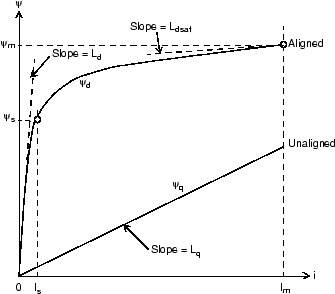Switched Reluctance Motor
(To be removed) Model the dynamics of switched reluctance motor
The Specialized Power Systems library will be removed in R2026a. Use the Simscape™ Electrical™ blocks and functions instead. For more information on updating your models, see Upgrade Specialized Power System Models to use Simscape Electrical Blocks.
Libraries:
Simscape /
Electrical /
Specialized Power Systems /
Electrical Machines
Description
The Switched Reluctance Motor (SRM) block represents three most common switched reluctance motors: three-phase 6/4 SRM, four-phase 8/6 SRM, five-phase 10/8 SRM, as shown in the following figure.

The electric part of the motor is represented by a nonlinear model based on the magnetization characteristic composed of several magnetizing curves and on the torque characteristic computed from the magnetization curves. The mechanic part is represented by a state-space model based on inertia moment and viscous friction coefficient.
To be versatile, two models are implemented for the SRM block: specific and generic models. In the specific SRM model, the magnetization characteristic of the motor is provided in a lookup table. The values are obtained by experimental measurement or calculated by finite-element analysis. In the generic model, the magnetization characteristic is calculated using nonlinear functions and readily available parameters.

Ports
Input
Output
Conserving
Parameters
References
[1] T.J.E. Miller, Switched Reluctance Motors and Their Control, Clarendon Press, Oxford, 1993.
[2] R. Krishnan, Switched Reluctance Motor Drives, CRC Press, 2001.
[3] D.A. Torrey, X.M. Niu, E.J. Unkauf, “Analytical modelling of variable-reluctance machine magnetisation characteristics,” IEE Proceedings - Electric Power Applications, Vol. 142, No. 1, January 1995, pp. 14-22.
[4] H. Le-Huy, P. Brunelle, “Design and Implementation of a Switched Reluctance Motor Generic Model for Simulink SimPowerSystems,” Electrimacs 2005 Conference.
Extended Capabilities
Version History
Introduced before R2006a